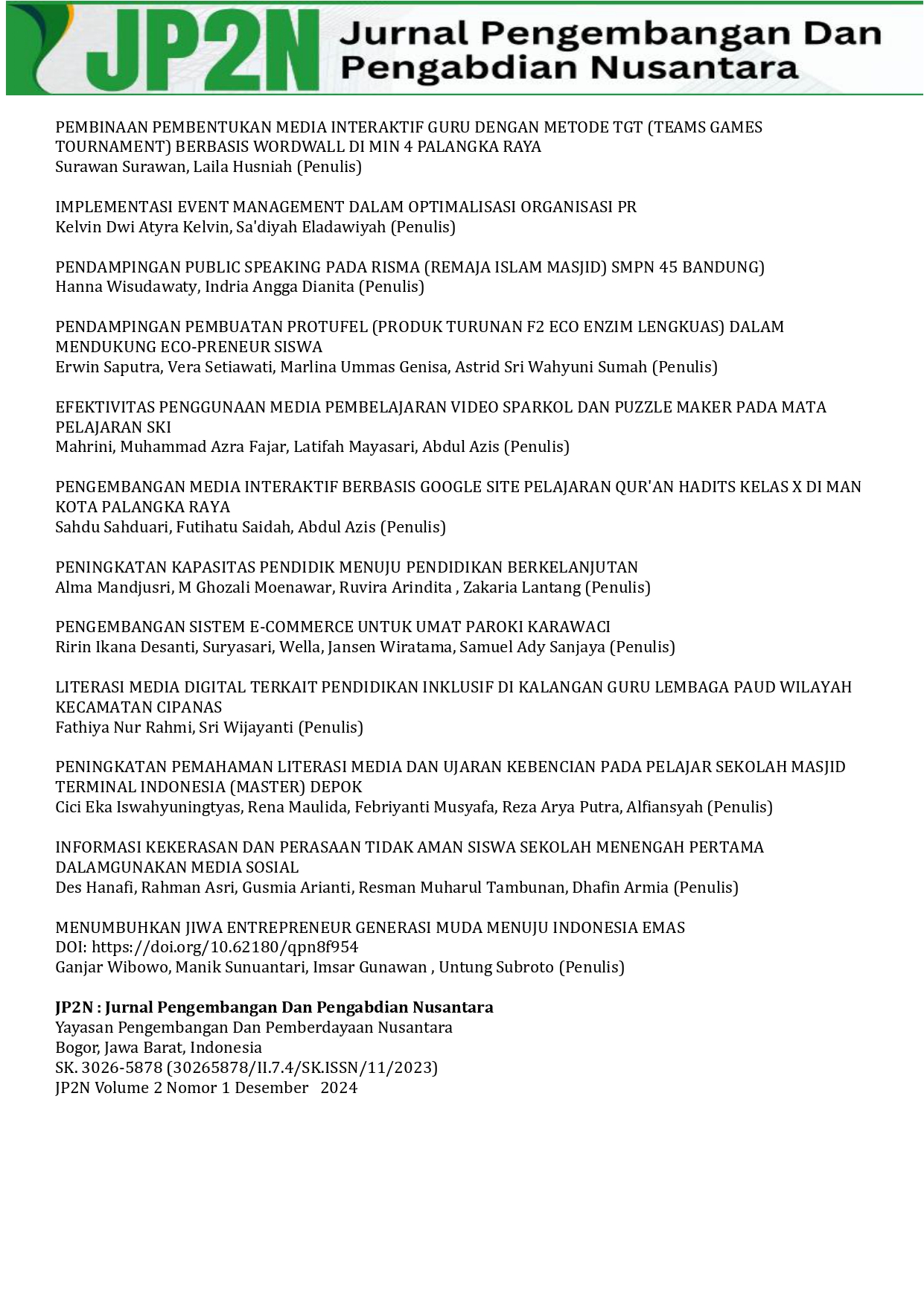PRAKTIK TEKNIK MENYIMPAN MENGGUNAKAN ALAT PERAGA KANTONG NILAI TEMPAT BILANGAN
DOI:
https://doi.org/10.62180/zfvbtp38Keywords:
Alat peraga , siswa, PemahamanAbstract
This research was conducted following the discovery of low proficiency among second-grade elementary school students in addition using the regrouping technique. The study involved 24 second-grade students and their teacher as data sources. Data collection employed multiple methods: interviews, observation, documentation review, tests, and field notes. Data validity was ensured through source triangulation and time triangulation techniques. This classroom action research was designed in two iterative cycles, with each cycle comprising four standard phases: planning, action implementation, observation, and reflection. Pre-intervention assessment revealed an initial mean student score of 59.38. Following Cycle I implementation, significant improvement occurred with the mean score reaching 75. Progress continued in Cycle II, where the mean score rose substantially to 87.5. Based on comprehensive data analysis, it is concluded that the implementation of visual aids effectively enhances students' conceptual understanding and mathematics learning outcomes. The intervention’s efficacy is empirically confirmed through consistent and significant score improvements across research cycles. These findings indicate that visual/manipulative tools play a crucial role in facilitating comprehension of complex addition concepts among elementary-level learners.
Downloads
References
Arruhil, F., & Elsa, E. (2019). Media pembelajaran inovatif. Penerbit Pendidikan.
Brendefur, J. L., Strother, S., Thiede, K. W., & Appleton, S. (2018). Developing mathematical reasoning. Journal of Educational Psychology, 110 (8), 1197–1210. https://doi.org/10.1037/edu0000258
Depdikbud. (2018). Panduan terminologi pendidikan. Kementerian Pendidikan dan Kebudayaan.
Efendi, M. (2019). Pengantar psikopedagogik anak berkelainan. PT RajaGrafindo Persada.
Fuson, K. C., & Briars, D. J. (1990). Using a base-ten blocks learning/teaching approach for first- and second-grade place-value and multidigit addition and subtraction. Journal for Research in Mathematics Education, 21(3), 180–206. https://doi.org/10.2307/749373
Kasmawati, Y. (2018). Diskalkulia: Diagnosis dan intervensi. Jurnal Pendidikan Khusus, 12 (1), 45–58.
Kunandar. (2011). Penelitian tindakan kelas. Depok: Rajawali Pers.
Matitaputy, D. (2018). Pengembangan media nilai tempat untuk siswa SD. Unesa University Press.
McGuire, P., & Kinzie, M. B. (2013). Analysis of place value instruction in U.S. pre-K mathematics curricula. Early Childhood Education Journal, 41(4), 255–264. https://doi.org/10.1007/s10643-012-0544-7
Mulyadi, S. (2010). Diagnosis gangguan belajar. Refika Aditama.
Nindiawati, N., Suryadi, D., & Dahlan, J. A. (2021). Pembelajaran aktif berbasis pengalaman dalam matematika SD. Jurnal Ilmu Pendidikan, 28(1), 33–42.
Priatna, D., & Yuliardi, R. (2018). Pembelajaran matematika terstruktur. Remaja Rosdakarya.
Rubino, R., & Saring, M. (2008). Metodologi penelitian kualitatif: Teknik pengumpulan dan analisis data. Penerbit Akademia.
Ruseffendi, E. T. (1994). Pengantar kepada membantu guru mengembangkan kompetensinya dalam pengajaran matematika untuk meningkatkan CBSA. Tarsito.
Suherman, E. (2000). Strategi pembelajaran matematika kontemporer. Jurusan Pendidikan Matematika FPMIPA UPI.
Suryani, N. (2010). Kesulitan belajar matematika dasar: Studi kasus di sekolah inklusi. Jurnal Psikopedagogia, 15(2), 112–125.
Downloads
Published
Issue
Section
License
Copyright (c) 2025 Ika Susilawati

This work is licensed under a Creative Commons Attribution-ShareAlike 4.0 International License.













